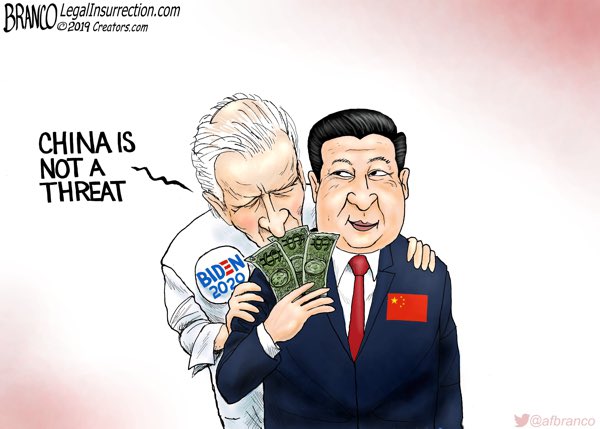
[cmsmasters_row][cmsmasters_column data_width=”1/1″][cmsmasters_text]
Biden, who long has been accused by critics of being soft on China, issued a lengthy executive order in which, buried amid matters purportedly designed to combat climate change, was an anomalous and potentially dangerous provision. The provision in question addresses nothing reasonably connected to climate change. Instead, it suspends for 90 days a key security measure put in place last May 1 by former President Donald Trump. Biden’s suspension of Trump’s measure makes not the slightest sense.
Trump’s Executive Order 13920 declared a national emergency with respect to the nation’s electric grid and prohibited the acquisition or installation of “any bulk-power electric equipment … designed, developed, manufactured, or supplied, by persons owned by, controlled by, or subject to the jurisdiction or direction of a foreign adversary.” In sum, Trump forbade the use of grid equipment that is made in China, Russia, or other hostile nations.
Trump’s order was a common-sense response to real, proven threats. Just last year, the Wall Street Journal reported that the United States seized a Chinese-built transformer because officials believe “its electronics had been secretly given malicious capabilities, possibly allowing a distant adversary to monitor or even disable it on command.” Cybersecurity expert Joseph Weiss reported that officials found “electronics that should not have been part of the transformer — hardware backdoors” that could allow the Chinese to “effectively gain control of the transformers without any network forensics being the wiser.”
Weiss also reminds us that China was first caught trying to hack into a U.S. grid in California as far back as 2001, and that “the Russians have been in our U.S. grids since 2014.”
Remote computer access may not be the only problem. In an interview with me Tuesday afternoon, Tommy Waller, director of infrastructure security at the Center for Security Policy and the director of an expert coalition called “Secure the Grid,” said that the concerns extend beyond remote-computer control.
“We’re also worried about sensors and actuators and drives that are installed even if they are not connected to the Internet,” he said. “If that hardware installed inside of them is designed at some point to send the wrong readings, it could sabotage the safety and security of that system.”
It has long been thought (quoting just one illustrative, major paper on the subject) that a major power grid collapse might be the single most deadly event in U.S. history, with “catastrophic” results due to “the lack of the basic elements necessary to sustain life in dense urban and suburban communities.” It thus makes perfect sense for Trump to have issued the directive against involving hostile foreign entities in the grid supply chain.
Contrarily, it boggles the mind to see Biden suspend Trump’s directive. Granted, Biden’s order suspends it for only 90 days while asking the secretary of energy to use the time to consider if a replacement order should be issued. Still, even if the policy is to be reviewed for improvements, why suspend it in the meantime? Why leave the grid vulnerable? Why not keep Trump’s wise Executive Order 13920 in place until and unless the Biden team comes up with something better?
“Why open the floodgates to grid infrastructure produced by countries hostile to America?” asked Waller.
Why, indeed? Biden’s order offers no explanation for suspending Trump’s proscription. This part of Biden’s new executive order is not just foolhardy but reckless. Congress should raise a stink about it, and Biden should revoke it, forthwith.
[/cmsmasters_text][/cmsmasters_column][/cmsmasters_row]